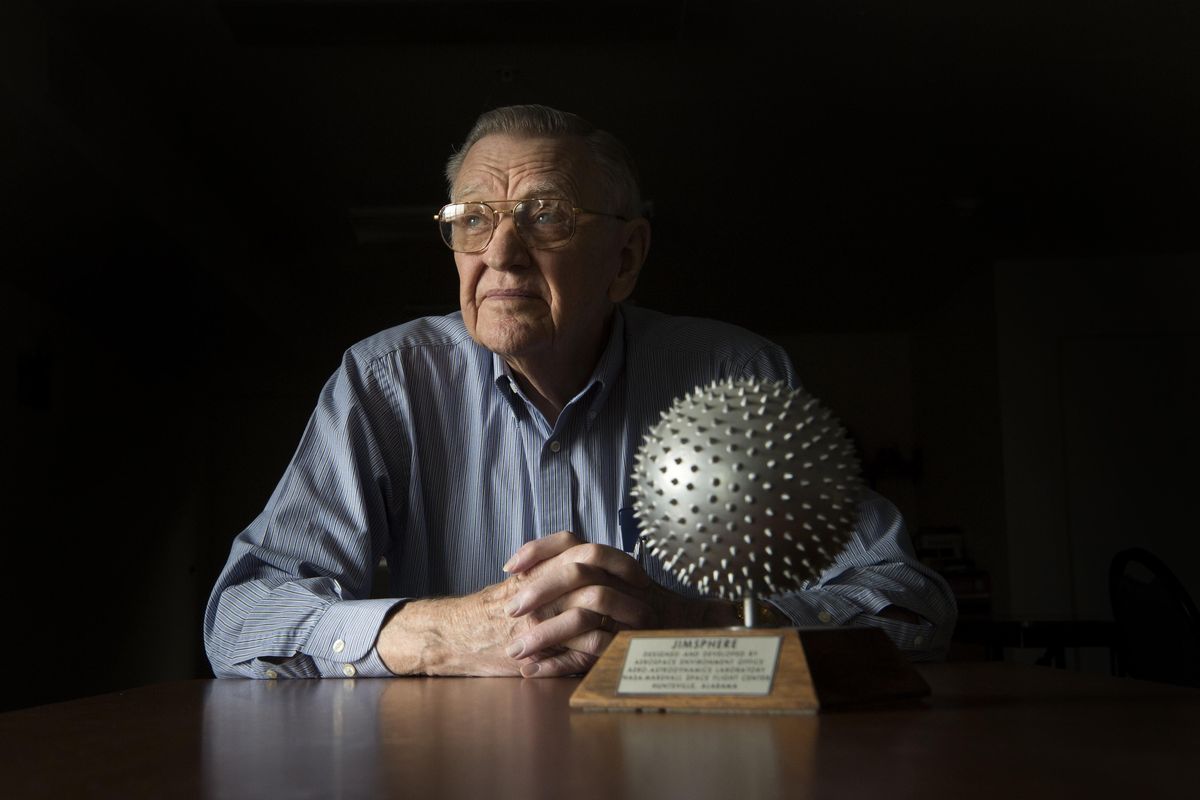Retired NASA scientist’s invention helped put men on the moon

A retired meteorologist living in Spokane Valley played a key role in the U.S. space program that landed men on the moon.
James R. Scoggins, 84, spent seven years working for NASA at the Marshall Space Flight Center in Huntsville, Alabama, where the Saturn V rocket system was developed.
His role at NASA was to design an aluminized Mylar weather balloon that could be tracked by radar to determine the wind shear forces against an ascending rocket.
Whirls of air, or vortices, make a smooth helium balloon swing from side to side when it’s released. Using disposable paper cups and tape, Scoggins mocked up a balloon that was studded with 400 cones, which prevented the invisible whirls of air from pushing it side to side.
His invention, later named the “Jimsphere” in honor of Scoggins, rose evenly through the atmosphere when released and was able to provide accurate data back to rocket engineers, Scoggins said.
The information was initially used to establish design criteria for the rocket system.
“The mission was to build a vehicle to go to the moon,” Scoggins said.
“When we went to the moon, I felt a pretty integral part of it.”
Neil Armstrong on the Apollo 11 mission stepped onto the lunar surface in 1969.
“I was so fortunate,” Scoggins said of the time he spent working for NASA and its talented scientists.
He left NASA in 1967 and spent 25 years on the meteorology faculty at Texas A&M University, where he retired.
Scoggins now lives with his wife, Donna, a Spokane Valley native, at the Evergreen Fountains senior living community at 1201 N. Evergreen Road. The couple moved here in 2010.
At NASA, he worked under famed German physicist Wernher von Braun, a pioneer in the development of rocket technology, including the terrifying V-2 rocket used by the Germans to bomb England during the last stages of World War II.
Von Braun was joined by 120 other former German scientists at the space center in Huntsville, where von Braun was the director, Scoggins recalled.
“They brought the technology when they came to this country,” Scoggins said. “That German bunch did the whole thing.”
Scoggins said that von Braun was so brilliant he could easily resolve complex engineering problems, including a decision on the best method for stabilizing the Saturn V rocket during launch and ascent.
Prior to one launch, Scoggins’ weather balloon readings showed that wind forces aloft were close to exceeding the designed strength of the rocket.
Von Braun decided to launch since the conditions would be a good test of the team’s engineering work, despite the risk to U.S. prestige had the rocket failed, Scoggins said.
“Once he decided something, no one objected,” he said of von Braun.
Von Braun faced controversy through his years in the U.S. over his involvement with the Nazis and the use of forced labor. He died of cancer in 1977.
When the first Saturn rocket was launched, “it worked perfectly,” Scoggins said.
“There were scientists in the hall crying,” he said.
Scoggins was born in Georgia on a small family cotton farm.
He received his bachelor’s degree in mathematics and physics in 1952 from Berry College in Rome, Georgia.
He served in the Air Force from 1952 to 1957, and studied meteorology at Penn State where he received a second bachelor’s degree. He received his master’s degree in meteorology from Penn State in 1960.
Scoggins worked for a short time on a project to develop a nuclear-powered aircraft.
During his years with NASA, Scoggins did his doctoral dissertation on establishing high-quality wind shear measurements, which was essentially the balloon project. He earned his doctorate in 1966 from Penn State.
“Much of my 40-year career was spent supporting directly or indirectly the U.S. government,” he said in a short biography on his career.
During his time on the faculty at Texas A&M, many of his students were from the Air Force. He also served as a consultant to U.S. government contractors.
He said he owes his success to a good education, especially from one of the professors at Berry College.
“I was fortunate to have this personally rewarding opportunity to support the greatest country on Earth – my country,” he said in the biography.